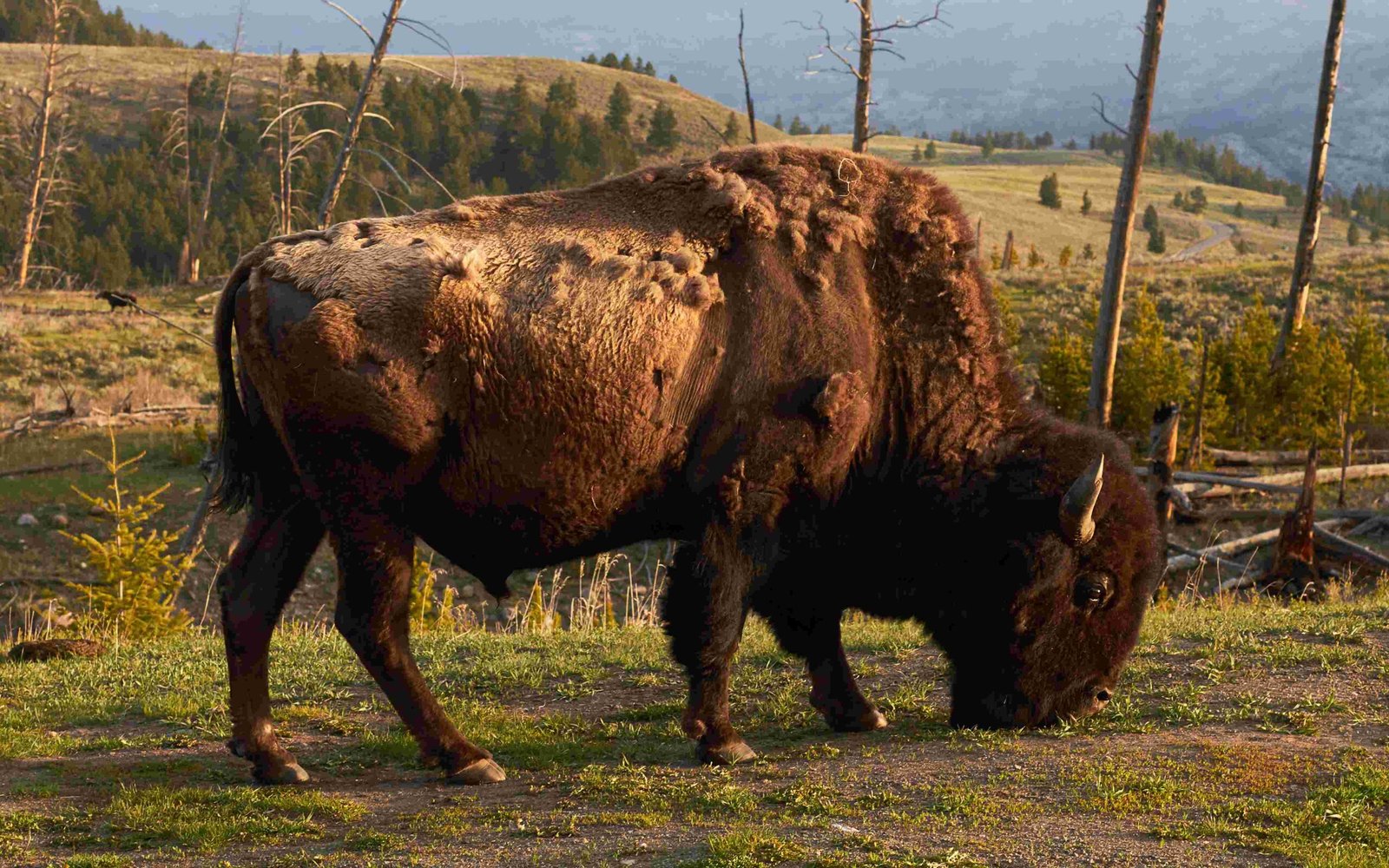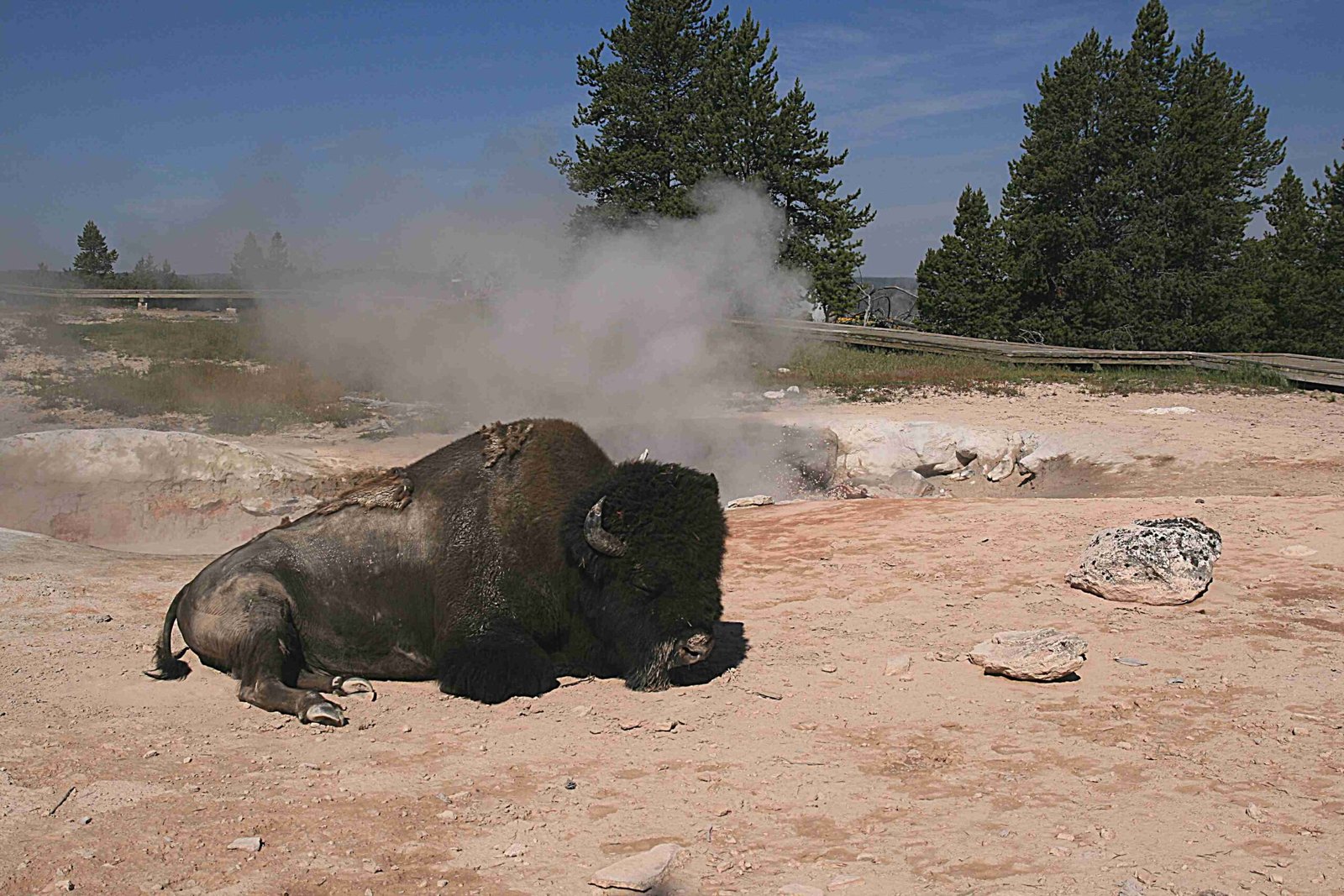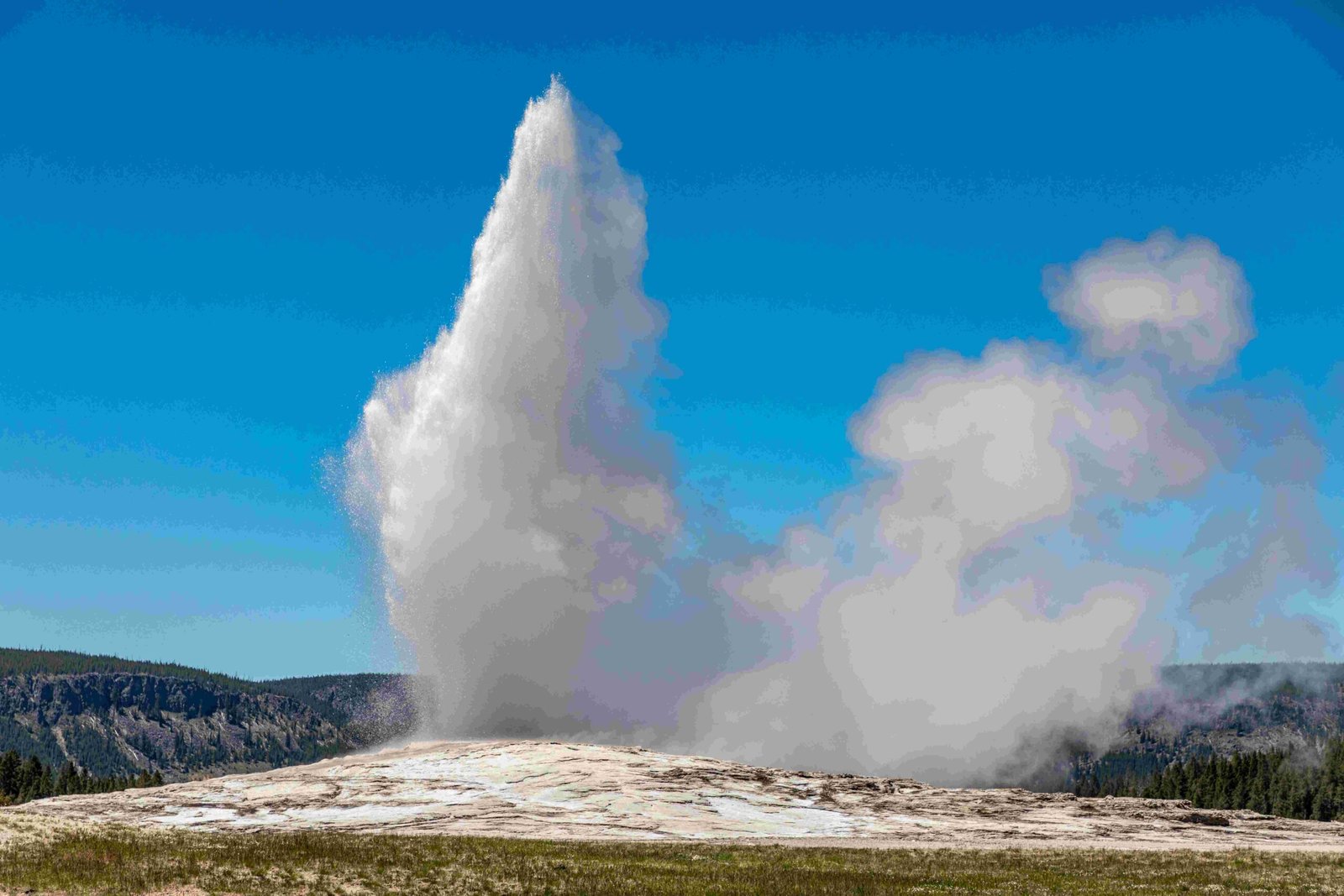Yellowstone National Park, America’s first national park, is home to some of the most spectacular natural wonders in the world. From geothermal features to vast lakes and diverse wildlife, the park offers a unique and unforgettable experience for visitors. This guide explores the biggest attractions in Yellowstone, providing detailed information on Old Faithful Geyser, Grand Prismatic Spring, Yellowstone Lake, and Mammoth Hot Springs. Discover the best viewing points, accessibility options, and recreational activities available at these iconic locations.
What Makes Old Faithful Geyser a Must-See Attraction?

Old Faithful Geyser is arguably the most famous attraction in Yellowstone National Park, known for its predictable eruptions and impressive displays. Here’s what you need to know:
- Eruption Schedule: Old Faithful erupts approximately every 90 minutes, with intervals ranging from 60 to 110 minutes.
- Eruption Height: Visitors can expect to see eruptions reaching heights of 100 to 185 feet.
- Viewing Area: While there’s no strict limit on visitor capacity, it’s advisable to arrive early for the best viewing spots.
- Accessibility: The area features paved paths and accessible facilities, making it suitable for visitors with mobility challenges.
Visitor Tips for Old Faithful
- Check the predicted eruption times at the visitor center.
- Arrive at least 20-30 minutes before the predicted eruption.
- Bring water and sunscreen, as the viewing area offers limited shade.
- Consider joining a ranger-led tour for in-depth information about the geyser and surrounding area.
How Does Grand Prismatic Spring Captivate Visitors?

Grand Prismatic Spring is the largest hot spring in the United States and the third-largest in the world. Its vibrant colors and massive size make it a photographer’s dream and a must-see for all park visitors.
- Size: Approximately 370 feet in diameter, covering about 14 acres.
- Temperature: The spring maintains an average water temperature of around 160°F (71°C).
- Colors: The spring’s rainbow hues are caused by heat-loving microorganisms that thrive in different temperature zones.
Best Viewing Points for Grand Prismatic Spring
- Boardwalks and viewing platforms around the spring
- Fairy Falls Trail overlook for a panoramic view
- Midway Geyser Basin parking area for a distant but impressive view
What Activities Can Visitors Enjoy at Yellowstone Lake?
Yellowstone Lake, the largest high-elevation lake in North America, offers a range of recreational activities for visitors:
| Activity | Description | Availability |
|---|---|---|
| Boating | Scenic cruises and private boat rentals | Seasonal (typically June to September) |
| Fishing | Catch native Yellowstone cutthroat trout | Permit required, available at visitor centers |
| Hiking | Trails around the lake’s shoreline | Year-round, weather permitting |
| Wildlife Viewing | Observe birds, elk, and occasionally bears | Best in early morning or late evening |
Yellowstone Lake Facts
- Surface Area: 132 square miles (342 square kilometers)
- Average Depth: 139 feet (42 meters)
- Maximum Depth: 390 feet (119 meters)
Why Are Mammoth Hot Springs a Geological Wonder?
Mammoth Hot Springs showcases the dynamic nature of Yellowstone’s geothermal features. The area is characterized by its terraced limestone formations and constantly changing hot springs.
- Number of Springs: Over 50 hot springs in the complex
- Temperature: Springs average around 160°F (71°C)
- Unique Feature: Travertine formations that grow and change shape over time
Exploring Mammoth Hot Springs
- Upper Terraces: Drive the Upper Terrace Loop for panoramic views.
- Lower Terraces: Walk the boardwalks for up-close views of the hot springs and formations.
- Albright Visitor Center: Learn about the area’s geology and history through exhibits and ranger programs.
How Can Visitors Plan Their Trip to Yellowstone’s Biggest Attractions?
Planning a trip to Yellowstone National Park requires careful consideration of several factors:
- Best Time to Visit:
- Summer (June to August): Peak season, warmest weather, all facilities open
- Spring/Fall: Fewer crowds, wildlife active, some facilities may be closed
-
Winter: Unique experiences, limited access, specialized tours available
-
Accommodation Options:
- In-park lodges (book well in advance)
- Campgrounds (both reservable and first-come, first-served)
-
Gateway communities like West Yellowstone and Gardiner
-
Transportation:
- Personal vehicle: Offers the most flexibility
- Guided tours: Available for those who prefer not to drive
-
Shuttle services: Limited, but available in some areas of the park
-
Essential Items to Pack:
- Layered clothing (weather can change quickly)
- Comfortable walking shoes
- Binoculars for wildlife viewing
- Water bottles and snacks
- Sun protection (hat, sunscreen, sunglasses)
By planning ahead and considering these factors, visitors can make the most of their time exploring Yellowstone National Park’s biggest attractions. Remember to always follow park rules, respect wildlife, and practice Leave No Trace principles to help preserve this natural wonder for future generations.
References:
1. National Park Service – Yellowstone
2. Yellowstone National Park Lodges
3. Yellowstone Park Foundation

